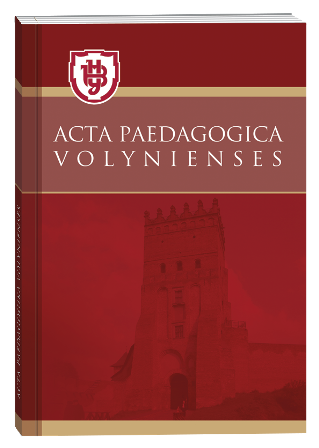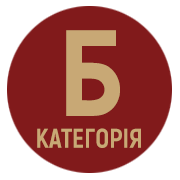THE USAGE OF INFORMATIONAL AND DIGITAL TECHNOLOGIES IN THE LINGUISTIC DISCIPLINES LESSONS
DOI:
https://doi.org/10.32782/apv/2021.3.14Keywords:
informational and communication technologies, linguistic disciplines, scribing, MOODLE dynamic learning environment, Google applications, AltspaceVR virtual environmentAbstract
The paper deals with the clarifying of the concept «informational technologies» and «digital technologies» in the modern information science. At the same time, the authors consider it appropriate to use the term «informational and communication technologies of learning», which in terms of didactics is interpreted as a combination of innovative teaching methods and techniques and software, digital, communication tools used for rapid acquisition, rapid and high-quality learning, establishing interaction between the subjects of the educational process. A review of the Ukrainian and foreign scientists’ works concerning the problems of the usage of informational and communication technologies in education has been carried out, the relevant aspects of research are identified. The peculiarities of the usage of informational and digital technologies in the linguistic disciplines’ lessons are determined. The attention is focused on the scribing-presentations, Google Classroom, the examples of their use in the learning environment of secondary and higher education establishments are given. The possibilities of the modular object-oriented dynamic learning environment MOODLE for teaching linguistic disciplines to future language teachers, as well as to students of non-pedagogical specialties are revealed. AltspaceVR virtual environment is characterized as a resource for research and educational activities of schoolchildren and students. It is determined that the combination of different methods of audio and video visualization, game techniques, openness, as well as interaction, continuous feedback between the participants – the subjects of the educational process are its advantages over the other technologies.
References
Глушков В.М. Основы безбумажной информатики. Москва : Наука, 1987. 552 с.
Вітюк В.В., Зуйко К.В. Використання мультимедійних презентацій у букварний період навчання грамоти. Педагогіка. Луцьк : Вежа-друк, 2016. С. 169–173.
Державний стандарт початкової освіти (Затвердженo постановою Кабінету Міністрів України від 21 лютого 2018 р. № 87). URL : http://surl.li/wqqd (дата звернення : 01.08.2021).
Державний стандарт базової середньої освіти (Затвердженo постановою Кабінету Міністрів України від 30 вересня 2020 р. № 898). URL : http://surl.li/kenu (дата звернення : 01.08.2021).
Сопін В. Покоління мобільного iнтернету (20 вересня 2015 р.) URL : https://www.youtube.com/watch?v=Wf2JL2kQqy4&t=4s (дата звернення : 20.09.2020).
Сукаленко Т.М., Вітюк В.В. Використання інноваційних технологій навчання української мови у вищій школі. Мова і соціум : етнокультурний аспект. Бердянськ : БДПУ, 2014. С. 125–127.
Тлумачний словник з інформатики / за ред. Г. Г.Півняка. Дніпропетровськ : Нац. гірнич. ун-т, 2010. 600 с.
Черненко А.В. Цифрові технології у процесі навчання майбутніх учителів іноземних мов. Педагогіка та психологія. Харків : ХНПУ, 2019. Вип. 61. С. 193–199.







